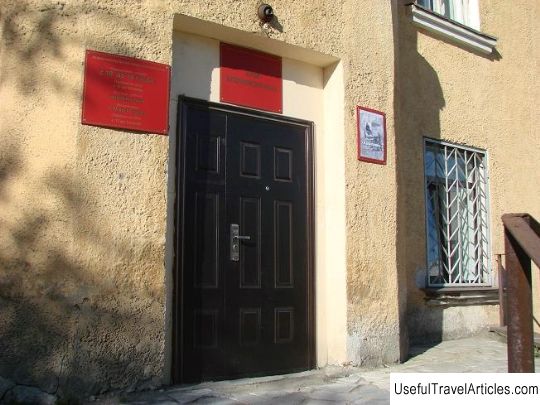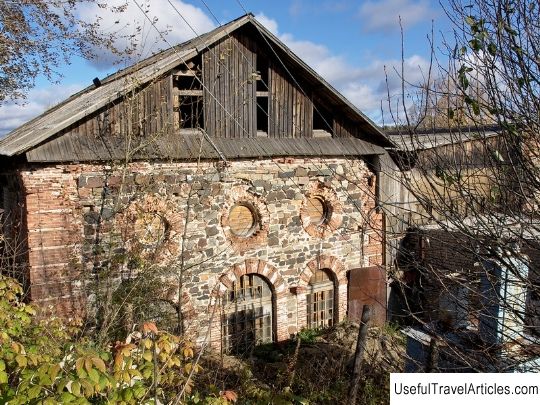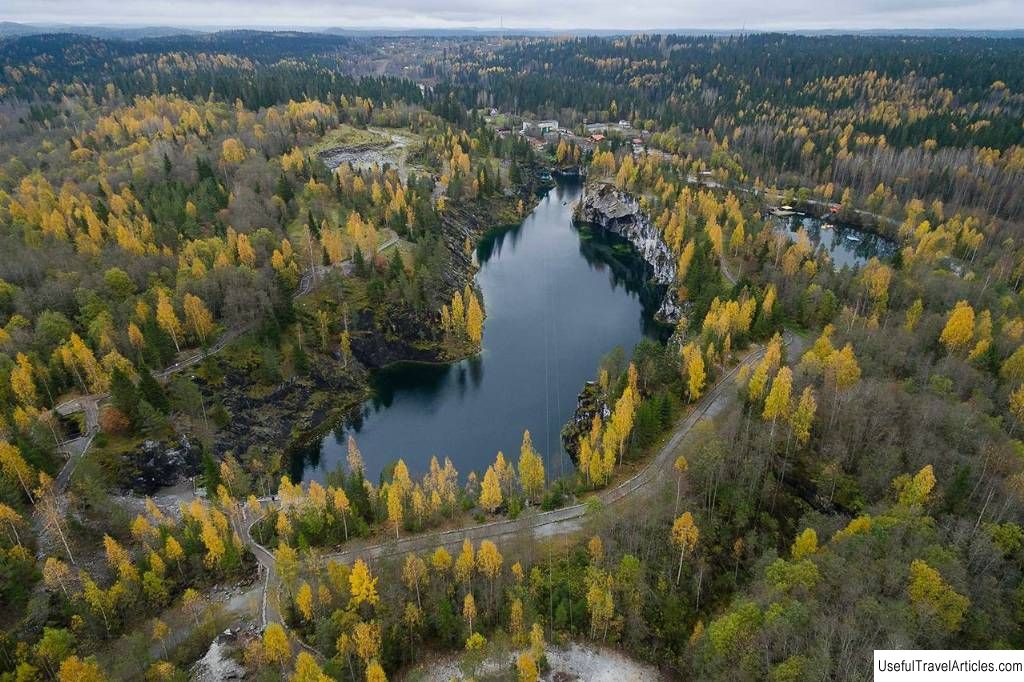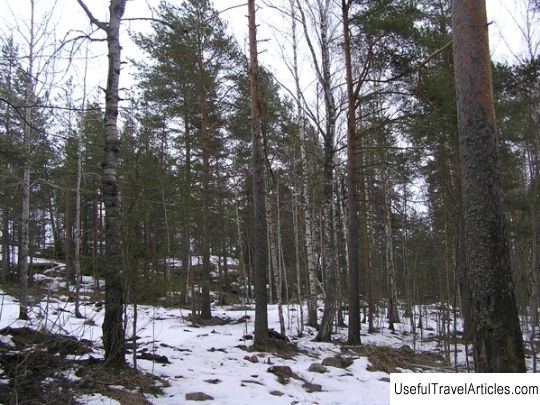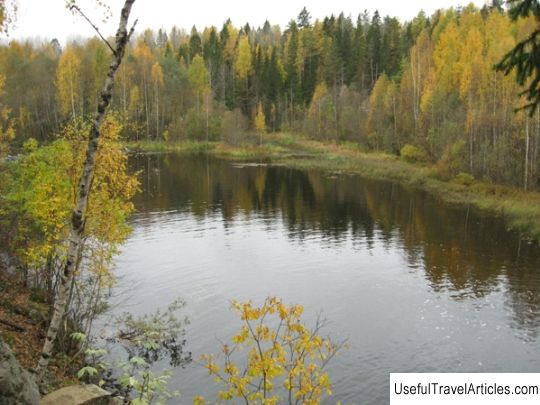Marble quarries description and photo - Russia - Karelia: Kondopozhsky district
Rating: 8,5/10 (876 votes) 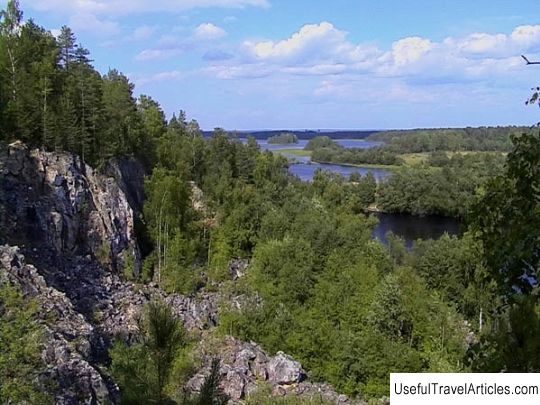
Marble strips description and photos - Russia - Karelia: Kondopozhsky district. Detailed information about the attraction. Description, photos and a map showing the nearest significant objects. Photo and descriptionNot far from the village of Belaya Gora there are several of the largest marble deposits that have been known since the 18th century. The village got its name thanks to the marble mountain, which is located on the other side of the Pravda River. Most of the mountain is no longer white, because traces of blasting are visible everywhere. The discovery of Tivdian marble took place in the middle of the 18th century by the merchant Martyanov. It was from this moment that the industrial development of marble quarries began. The deposits of Tivdian marble became especially necessary for St. Petersburg, which was under construction at that time, because this required a huge amount of decorative and building stone. Marble stones were quarried especially carefully in the form of large massive blocks. Then, after pre-processing, stones were sent to the city of St. Petersburg most often by waterways, which made it easier to solve an important transportation issue. As for the extraction and transportation of marble, all these operations were described in great detail by the famous academician Ozeretskovsky in his work "A Journey on the Ladoga and Onega lakes." From this book you can learn that the extraction of marble was carried out according to some technology: in the lower part of the mountain, round-shaped wells were gouged with iron drills, which could reach up to an inch in thickness, and could be as long as an arshin. Special flat and sharp ends were made of steel, which are capable of piercing marble. If you attach such a drill to marble, then one person must hold it, and another must hit it with a large hammer, and the worker holding the drill, tries to turn it. In order to protect the iron from overheating, as well as to clean the wells from the resulting dust, cold water is poured into the well with a small stream, from which the dust itself flows. As soon as the wells are drilled in the required quantity, then they will have to dry out. Then they are filled with gunpowder and the holes are filled with dry grease, on which small holes are pierced with wire. At the time when the workers go to lunch or dinner, they use a siren to light gunpowder in the drilled holes - this is how you can separate huge blocks of stone from the mountain. This work continues until, along the entire mountain, they break out depressions on marble stone, which reach a depth of three fathoms or even more. After carrying out this kind of work, they are already continuing on the surface of the mountain, where deep holes are drilled obliquely to each other using the same method. First, short drills are used, then longer and then the longest, if the mountain relief requires it. They are also filled with gunpowder and set on fire by a siren light. In this way, huge stones are broken off from a broken mountain, which are then drilled and split with special iron wedges in order to hew out their necessary beams and other blanks to the required extent or according to samples. These blanks were sent to St. Petersburg by water. Many architectural specialists were interested in the rocks of marble in the village of Belaya Gora, because the color of the rocks ranges from pale pink to lilac, including more than 30 shades. Most successfully these breeds were used in the creation of the interior design of the Russian Museum of Ethnography with its huge columns located in the central hall. Dolomite slabs were used for facing the Marble Palace on the Neva River, and during the construction of the royal tomb in the city of Pavlovsk. Marble production expanded, and in 1807 a marble factory was built. Towards the second half of the 19th century, Tivdi marble was in crisis and its development almost stopped. Twenty years later (in 1887) the lease was transferred to the lease for a period of 24 years to the chamber-junker V.V. Savelyev. The plant began to produce window sills, fireplaces, tables, tombstones and more. The products were in great demand in Povenets, Petersburg, Petrozavodsk, Finland. But the brave tenant was haunted by a series of misfortunes, which forced him to refuse to rent a withdrawal. Since 1893 they passed into the hands of the Lombard partnership. At the beginning of the 20th century, the industrial development of the marble deposit was completely stopped.    We also recommend reading Cathedral of St. Nicholas the Wonderworker description and photos - Ukraine: Mariupol Topic: Marble quarries description and photo - Russia - Karelia: Kondopozhsky district. |
